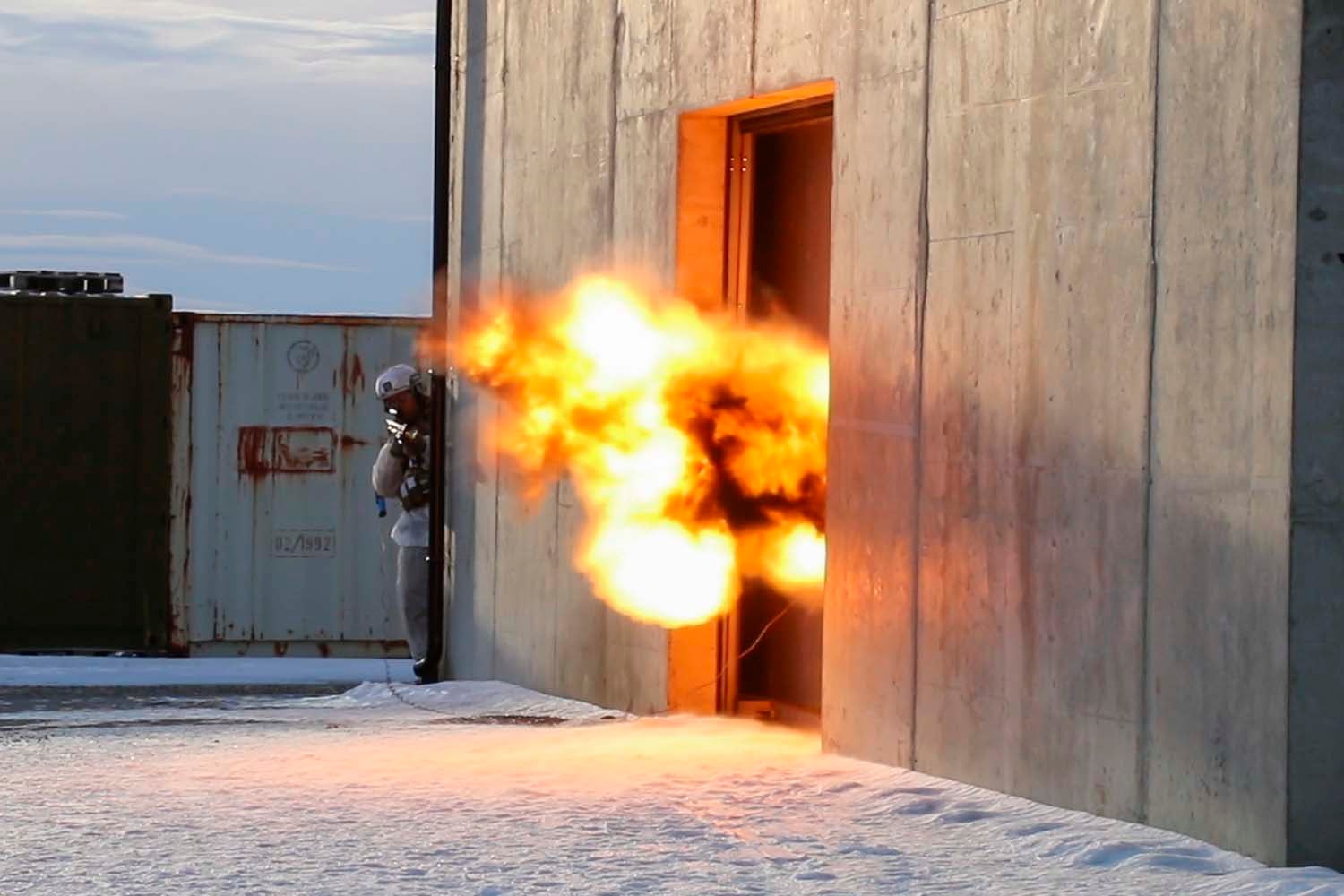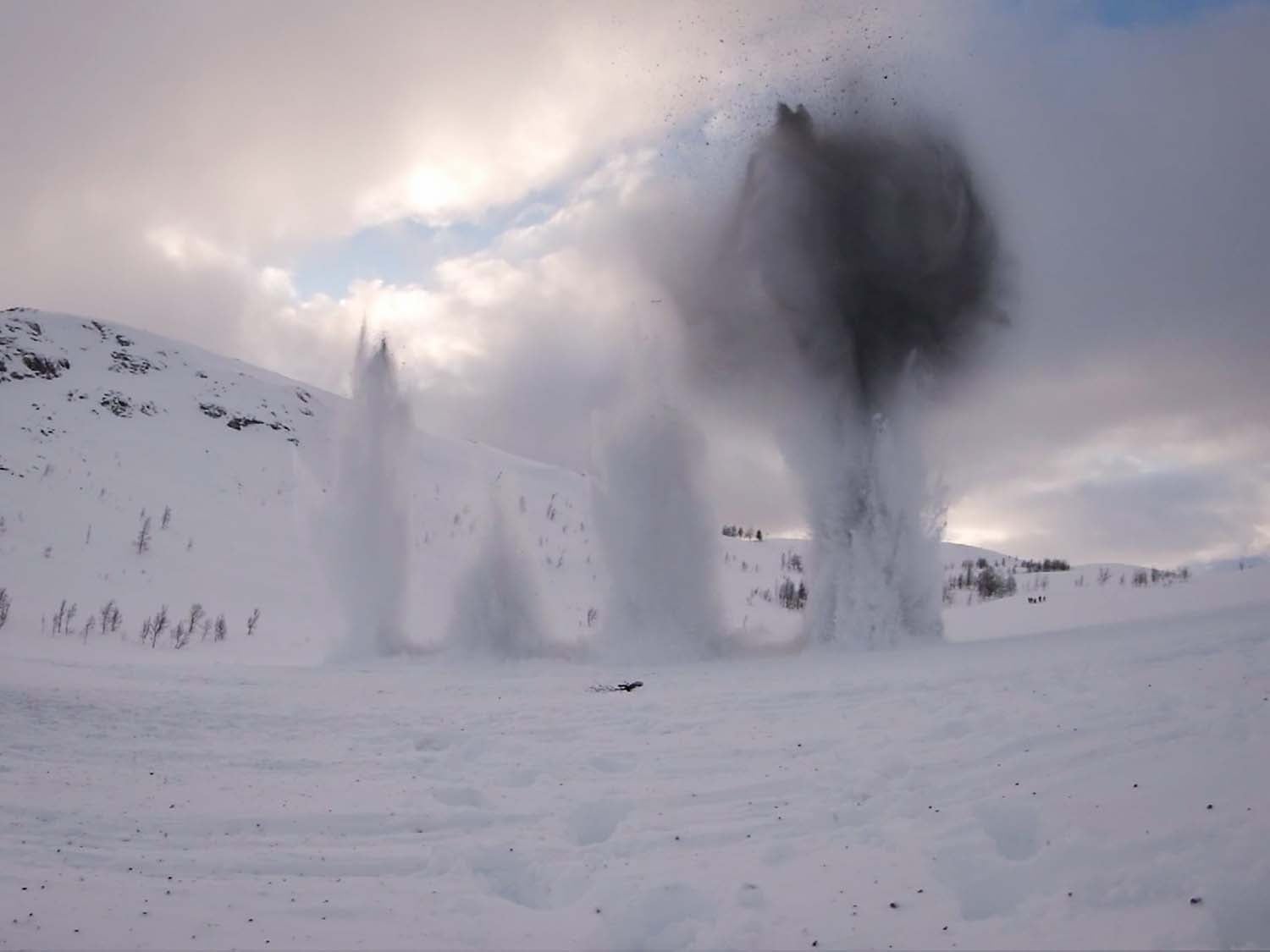Photo Of The Day and we take a look at what is going on around the Arctic Circle in Norway. We’re looking at Royal Marines Assault Engineers planting charges to destroy railroads and other infrastructure (been there, done that).
Below: In the cold everything becomes a little bit harder.

I wonder if any unit in the World has a dedicated battle dress in full white?

Below: CQB fighting with the SA-80. Here you can see how the red dot on top of the main sight can be used where the distance to the target can be very low.

Royal Marines Assault Engineers are blasting their way through the ice and snow on explosive missions in the Arctic Circle.
The engineers of 45 Commando have been on advanced demolitions training – working on how best to sabotage the enemy in the Arctic – and testing their close-quarters battle skills in one of Norway’s state-of-the-art facilities that includes a train and 150ft ship to battle through.
These commando specialists provide engineering support to all Royal Marines units and their skill-set is key to the way the Green Berets are evolving into the Future Commando Force (FCF).
As part of FCF tactics, small, lethal teams will carry out destructive raids on enemy infrastructure. Central to that is the ability to incapacitate and disrupt adversaries but also gain access to wreak havoc.
That is where Assault Engineers come into their own and bring a unique ability to the battlefield.
“We provide close combat engineering support to 45 Commando’s fighting companies and provide the ability to speedily conduct sabotage and denial of enemy assets (weapon systems, equipment, vehicles and vessels), infrastructure and routes,” said Colour Sergeant Ryan Selbie, of 45 Commando.
“Combat Assault Breachers operating within the Future Commando Force will be a key enabler to mission success.
“As the corps’ method of entry, demolition (sabotage and denial) and counter-explosive ordnance specialists, we bring a unique and invaluable skills set to the FCF small-team construct.
“Not only are we able to shape the battlefield by denying the enemy freedom of movement, but as we’ve learnt from recent conflicts, we are operating more frequently in the urban environment and this is where Assault Engineers come into their own.”

Specialists in demolitions, part of these engineers’ remit is to deny the enemy freedom of movement around the battlefield.
During their Arctic outings, they have been practicing how best to deny ice bridges and roads, sabotage enemy rail networks and create obstacles such as abates, the felling and interlacing of trees across a route using explosives, in a cold weather environment.
Following that, it was onto the close-quarter combat training.
“One of our jobs is to ensure the Close Combat Companies can gain entry into buildings occupied by the enemy, getting our guys inside quickly means that they can do their jobs and complete the mission,” added Colour Sergeant Selbie.
“The facilities and ranges in Norway have allowed for great training for 45 Commando’s Assault Engineer team.
“The Norwegian’s excellent facility has ensured that newer members of the unit are bought up to scratch and the more experienced people are put through their paces.
“Out on the ranges, training in Norway allows us to do some unique training, such as denying ice bridges.”

Source: Royal NAVY
What about you? Would you prefer to “operate” in a hot or cold environment? Or better stay behind the keyboard?
 Your Privacy Choices
Your Privacy Choices

